Are you a cheese lover with a taste for exquisite flavors? Look no further than this comprehensive guide to French cheeses. From the creamy richness of Brie to the bold and tangy Roquefort, this article will take you on a journey through the diverse and tantalizing world of cheese in France. Get ready to discover the unique characteristics, origins, and perfect pairings for each cheese, as you embark on a delightful exploration of the flavors that make French cheeses so renowned worldwide. Get your taste buds ready for a delectable adventure!
History of French Cheese
French cheese has a rich and fascinating history that dates back thousands of years. The exact origin of cheese in France is uncertain, but it is believed to have been introduced to the region by the Romans. The Romans were known for their love of cheese and brought their cheese-making techniques with them as they conquered new lands. Over time, the practice of cheese-making spread throughout France, and various regions developed their own unique cheese-making traditions.
Origin of French Cheese
The origins of French cheese can be traced back to the Roman period, when the Romans introduced dairy farming to the region. The Romans brought with them the practice of cheese-making and taught the local people how to make cheese from cow’s milk. As the centuries passed, different regions of France developed their own cheese-making techniques and began to produce their own unique varieties of cheese.
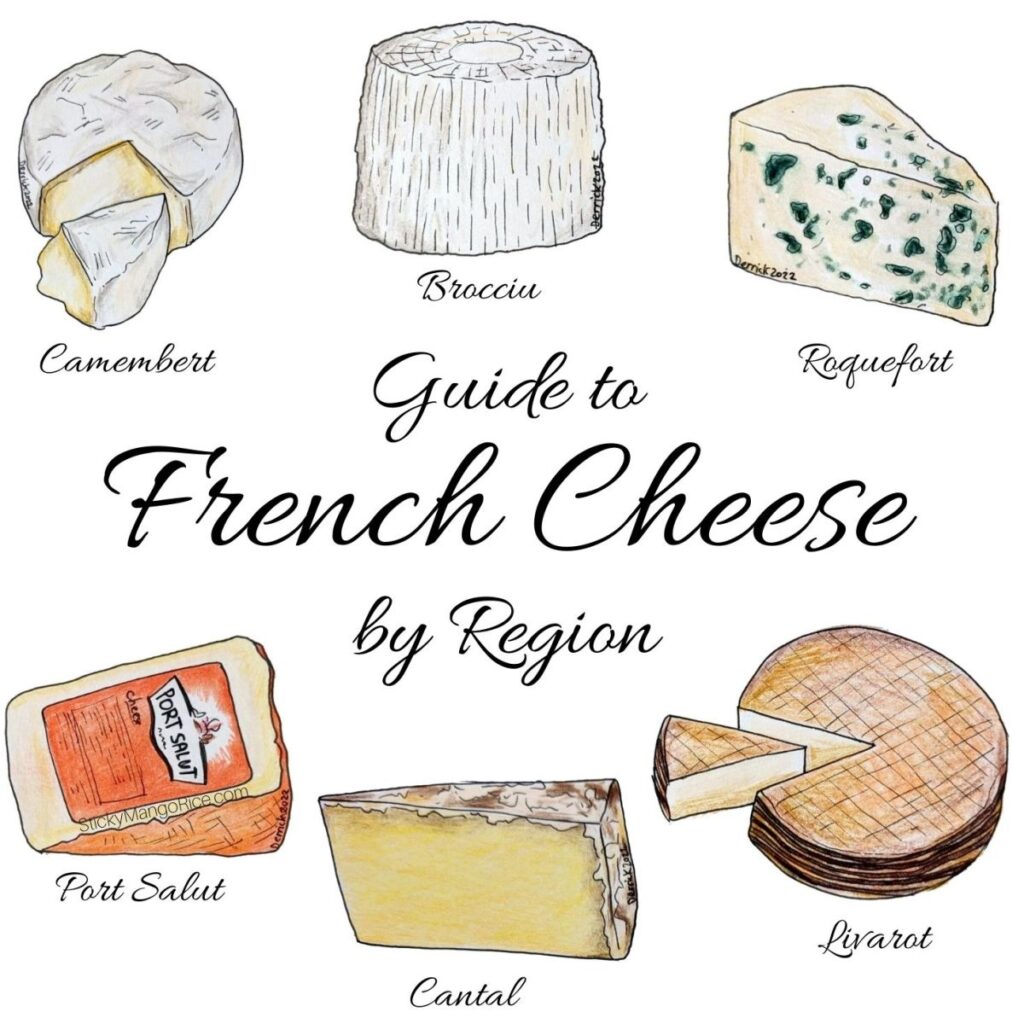
Evolution of French Cheese
The evolution of French cheese can be attributed to a variety of factors, including regional variations in climate, geography, and culinary traditions. Over time, different regions of France developed their own styles of cheese and began to experiment with different flavors and textures. This led to the creation of an incredibly diverse range of French cheeses, each with its own distinct characteristics and qualities.
Importance of French Cheese in French culture
French cheese plays a pivotal role in French culture and is considered a national treasure. From family gatherings to formal dinners, cheese is an integral part of French cuisine and is enjoyed by people of all ages. French cheese is not only appreciated for its delicious taste, but it is also seen as a symbol of the country’s heritage and tradition. Many French cheeses are protected under the Appellation d’Origine Contrôlée (AOC) system, which ensures that they are produced using traditional methods and from specific regions.
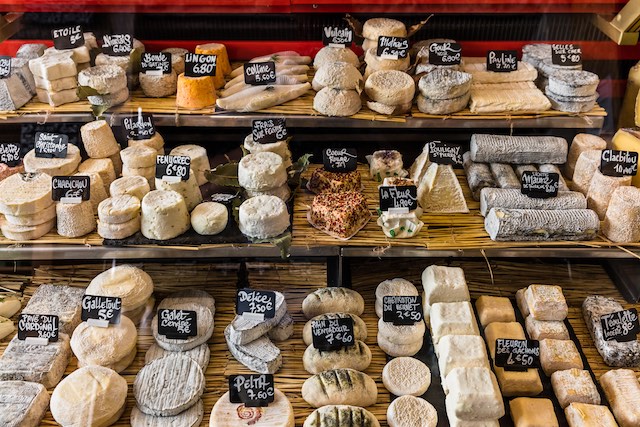
Classification of French Cheese
French cheese can be classified into four main categories: AOC cheese, farmhouse cheese, artisanal cheese, and industrial cheese. Each category has its own unique characteristics and production methods.
AOC Cheese
AOC cheese, also known as Protected Designation of Origin (PDO) cheese, is produced according to strict guidelines and must come from a specific geographical area. These cheeses are made using traditional methods and specific ingredients from the designated region. Some well-known AOC cheeses include Camembert, Roquefort, and Comté.
Farmhouse Cheese
Farmhouse cheese refers to cheese made on a farm using milk from the farmer’s own animals. These cheeses are typically made in small batches and have a unique flavor due to the variations in milk from different animals and seasons. Farmhouse cheeses often have a rustic and artisanal quality to them.
Artisanal Cheese
Artisanal cheese is made by skilled cheese-makers using traditional methods, but the milk used may come from various sources. These cheeses are often handmade and have a high level of craftsmanship. Artisanal cheeses can vary in size, shape, and flavor profile.
Industrial Cheese
Industrial cheese is produced on a large scale using mechanized processes. These cheeses are often mass-produced and have a consistent flavor and texture. Industrial cheeses are often more affordable and widely available compared to other types of French cheeses.
Common French Cheeses
France is renowned for its wide variety of cheeses, each with its own unique flavor and texture. Here are some of the most well-known French cheeses:
Brie
Brie cheese is one of the most famous French cheeses and is named after the region of Brie in France. It has a soft, creamy texture and a rich, buttery flavor. Brie is often enjoyed with bread or crackers and pairs well with a variety of fruits and nuts.
Camembert
Camembert is another popular French cheese, originating from the region of Normandy. It has a bloomy rind and a creamy, smooth interior. Camembert has a slightly earthy and tangy flavor. It is often served with crusty bread and pairs well with apples and pears.
Roquefort
Roquefort cheese is a blue cheese that hails from the region of Roquefort-sur-Soulzon in southern France. It is made from ewe’s milk and has a crumbly texture and a distinctive sharp, tangy flavor. Roquefort is often used in salads and can be enjoyed with honey or walnuts.
Comté
Comté is a firm, nutty cheese that comes from the Jura Mountains in eastern France. It is made from cow’s milk and has a complex flavor profile with hints of fruit, nuts, and caramel. Comté is often grated or melted and is a popular ingredient in many traditional French dishes.
Saint-Nectaire
Saint-Nectaire is a semi-soft cheese that originates from the Auvergne region in central France. It has a creamy texture and a mild, slightly nutty flavor. Saint-Nectaire pairs well with crusty bread and pairs beautifully with fruity wines.
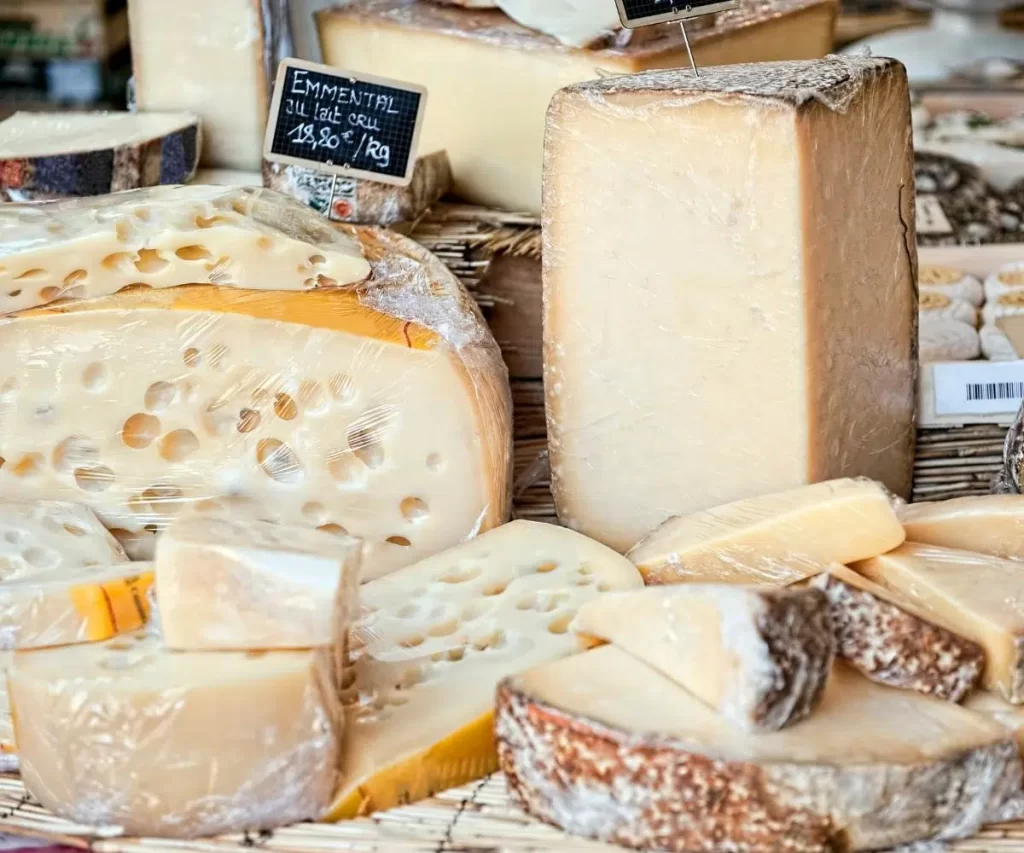
Cheese Regions in France
France is divided into several regions, each known for producing distinct types of cheese. Here are some of the key cheese regions in France:
Normandy
Normandy is famous for its rich and creamy cheeses, including Camembert and Livarot. The region’s lush pastures and mild climate contribute to the production of high-quality milk, which is essential for making these creamy cheeses.
Île-de-France
Île-de-France is home to the renowned Brie cheese. The region’s fertile agricultural lands provide an ideal environment for dairy farming, making it the perfect place to produce Brie.
Auvergne
Auvergne is known for its traditional farmhouse cheeses, including Saint-Nectaire and Cantal. The region’s volcanic soil and mountainous terrain contribute to the unique flavors and characteristics of these cheeses.
Brittany
Brittany is famous for its buttery and tangy cheeses, such as Pont-l’Évêque and Fourme d’Ambert. The region’s coastal climate and rich dairy farming tradition shape the flavor profiles of these cheeses.
Jura
Jura is renowned for its Comté cheese, which is made from the milk of cows that graze on the region’s lush pastures. The Jura Mountains provide a unique microclimate that contributes to the distinct flavors of Comté.
Making French Cheese
The process of making French cheese involves several key steps, including milk selection, curdling process, molding the cheese, and affinage (aging process).
Milk Selection
The quality of the milk used is vital in cheese-making. French cheese-makers use fresh, high-quality milk from cows, sheep, or goats, depending on the type of cheese being produced. The flavor and characteristics of the cheese are influenced by the animals’ diet and the region where the milk is sourced.
Curdling Process
The curdling process involves adding a coagulating agent, such as rennet or lactic acid bacteria, to the milk. This causes the milk to separate into curds and whey. The curds are then cut to release the whey and promote the development of the desired textures and flavors in the cheese.
Molding the Cheese
After the curds have been cut and drained, they are placed into molds to give the cheese its desired shape. The molds also help in further draining the whey and shaping the final texture of the cheese.
Affinage – Aging Process
Once the cheese is molded, it goes through the affinage process, which involves aging the cheese in temperature and humidity-controlled environments. This process can last anywhere from a few weeks to several years, depending on the type of cheese. Aging plays a crucial role in developing the flavors, textures, and aromas of the cheese.
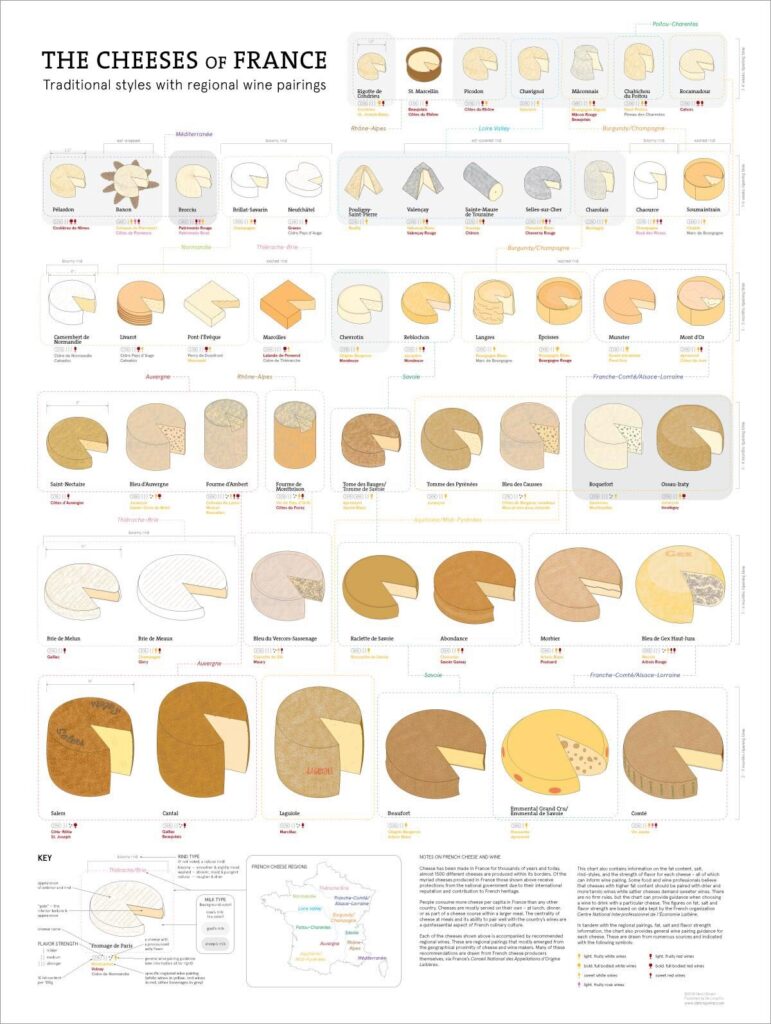
Cheese Pairings and Serving
French cheese is best enjoyed when paired with complementary flavors and served in the right manner. Here are some tips for pairing and serving French cheese:
Traditional Accompaniments
French cheese is often served with traditional accompaniments such as crusty bread, butter, and charcuterie. These elements enhance the flavors and textures of the cheese and provide a balanced and enjoyable dining experience.
Wine Pairings
Wine and cheese are a classic combination, and finding the perfect pairing can enhance both the cheese and the wine. For example, soft and creamy cheeses like Brie pair well with sparkling wines, while strong and aged cheeses like Roquefort go well with sweet dessert wines.
Bread and Crackers
Crusty bread and crackers are excellent choices for serving with French cheese. Their neutral flavors provide a contrast to the rich and intense flavors of the cheese. Baguettes, sourdough, and water crackers are popular options.
Fruit and Nuts
Fruits such as apples, pears, grapes, and figs offer a refreshing and slightly sweet contrast to the savory flavors of the cheese. Nuts, such as walnuts or almonds, add a crunchy texture and nutty flavor that pairs well with many French cheeses.
Shopping for French Cheese
Exploring the world of French cheese is an exciting experience that can be undertaken in various ways. Here are a few options for purchasing French cheese:
Visiting Local Fromageries
Fromageries, or cheese shops, are the best places to find a wide variety of French cheeses. These specialty shops are staffed with knowledgeable experts who can provide guidance and recommendations based on your preferences.
Specialty Cheese Shops
Specialty cheese shops often carry a curated selection of high-quality French cheeses. These shops focus on providing unique and artisanal cheeses from specific regions or cheese-makers. They may also offer cheese tastings and educational events.
Supermarkets and Grocery Stores
Many supermarkets and grocery stores in France have dedicated cheese sections that offer a selection of French cheeses. While the variety may not be as extensive as in a specialty cheese shop, these stores provide convenience and accessibility for everyday cheese purchases.
Online Purchases
With the rise of e-commerce, it is now possible to purchase French cheese online and have it delivered to your doorstep. This option provides access to a wider range of cheeses, especially for those living in areas without local cheese shops.
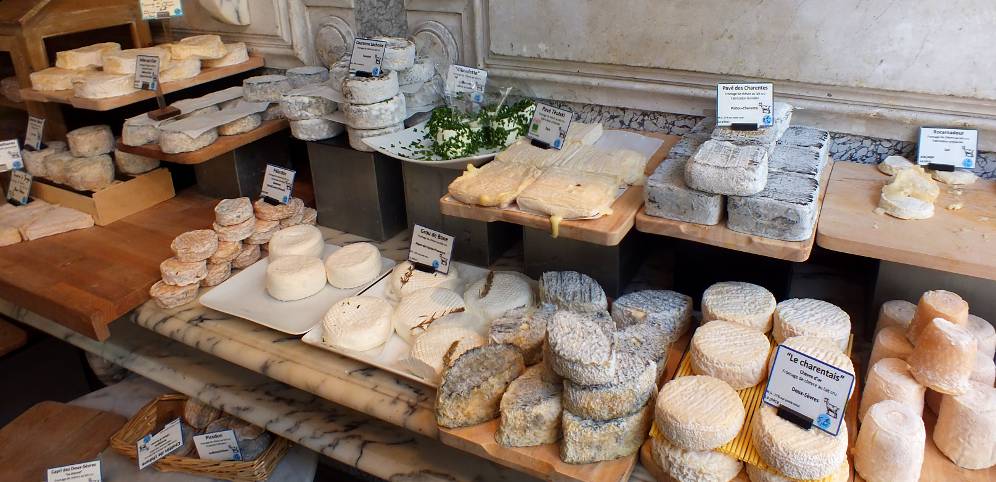
Preservation and Storage
Proper preservation and storage are essential to maintain the quality and flavors of French cheese. Here are some guidelines to follow:
Refrigeration
Most French cheeses should be stored in the refrigerator to slow down the aging process and prevent spoilage. However, it is important to let the cheese breathe by wrapping it loosely in wax paper or cheese paper. Avoid using plastic wrap, as it can cause the cheese to sweat and develop off flavors.
Wrapping the Cheese
When storing cheese in the refrigerator, it is crucial to wrap it properly to maintain its freshness. Wax paper or cheese paper are ideal for wrapping cheese, as they help retain moisture while allowing the cheese to breathe.
Storing Different Cheese Types
Different types of French cheese have different storage requirements. Soft and creamy cheeses, like Brie and Camembert, are best consumed within a few days and should be stored in the refrigerator. Hard and aged cheeses, such as Comté and Roquefort, can be stored for longer periods and should be wrapped in cheese paper and kept in a cool, dark place.
French Cheese Etiquette
When it comes to serving and enjoying French cheese, there are some etiquette guidelines to follow:
Presentation and Cutting
French cheese should be presented on a cheese board or platter and served at room temperature. Soft cheeses should be cut into small wedges or served as a whole wheel. Hard cheeses can be sliced or shaved. It is best to cut only what you plan to eat and avoid cutting the cheese in advance, as it can dry out.
Using the Correct Utensils
French cheese is traditionally served with specific utensils. A cheese knife with a curved blade is ideal for cutting soft and semi-soft cheeses, while a wire cheese slicer is perfect for slicing harder cheeses. Forks or toothpicks can be used for serving individual pieces of cheese.
Serving Order
When serving multiple French cheeses, it is important to follow a specific order. Start with milder, softer cheeses and progress to stronger, aged cheeses. This allows the flavors to build gradually and ensures that each cheese is appreciated individually.
Exploring Regional Flavors
France’s diverse geography contributes to a wide range of regional flavors in its cheeses. Here are some notable regional flavors to explore:
Nordic Flavors
The northern regions of France, such as Normandy, produce cheeses with rich and creamy flavors, often influenced by the maritime climate. Cheeses like Camembert and Livarot have a luscious and slightly earthy taste, reflecting the fertile pastures and dairy traditions of the area.
Alpine Flavors
The mountainous regions of the French Alps are known for their alpine-style cheeses. These cheeses, such as Beaufort and Abondance, have a nutty and slightly sweet taste, with hints of grass and wildflowers. The cows that graze on the alpine meadows give the milk a unique flavor.
Mediterranean Flavors
The Mediterranean coastline of France produces cheeses with bright and vibrant flavors. Cheeses like Banon and Brocciu have a distinctively herbal and aromatic taste, thanks to the wild herbs and flowers that the animals graze on.
Coastal Flavors
Coastal regions, such as Brittany, produce cheeses with salty and tangy flavors. Cheeses like Pont-l’Évêque and Mimolette have a slight coastal influence, as the animals graze on salt-tinged pastures close to the sea.
In conclusion, French cheese has a long and storied history, with each region of France contributing its own unique flavors and characteristics. Whether enjoyed with traditional accompaniments, paired with wine, or used in traditional recipes, French cheese is a versatile and beloved part of French culture. So next time you have the opportunity, be sure to indulge in the delightful world of French cheese and experience the rich flavors and traditions that have made it a timeless culinary treasure.
